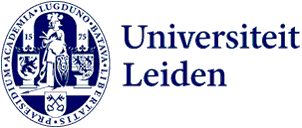
If your friends jump in the river…
Young people influence one another to take greater risks, although it's not quite that cut and dried. This is what development psychologist Jorien van Hoorn discovered. Peers also have a positive influence on one another, an aspect that has so far been under-researched. PhD defence 12 January.
In adolescence young people go around in groups of friends. At this age it's important to belong to a group, which means that your friends' opinions carry a lot of weight. You learn from group pressure the 'social norms' about what behaviour is acceptable in the group. Seeing friends taking risks encourages younger group members to do the same. The same mechanism means that positive behaviour by group members can stimulate positive behaviour in others.
View the videoblog with Jorine van Hoorn about her PhD research:
Betting
For her research on risk behaviour Van Hoorn asked adolescents to take part in a betting game. They either did this on their own or with online advice from friends of the same age. These online friends made sure that the young participants took more risks and bet more. But their betting behaviour depended on the kind of advice they were given by their online peers whether to bet very little, a small amount or a lot of coins. The degree of uncertainty of the bet also played a role. Van Hoorn: 'We found that the advice from peers had most effect on high-risk behaviour when the choice was uncertain, and less effect when the choice was more certain. It's not the case that adolescents always blindly follow what their peers advise.'
Sharing coins
For her research on prosocial behaviour Van Hoorn asked young people to join in a game where they shared coins. The adolescents could choose whether to keep the coins themselves or give them away to the group. In this experiment, giving coins away represents prosocial behaviour. Peers can then 'like' your decision. Photos of the brain are made in an MRI scanner to see what happens when test candidates took decisions on their own and then again when they were being judged by their peers. With prosociaal behaviour, the 'social brain network' is activated. This is the area of the brain that is important for considering what others think of you.
Positive group impression
Society generally has a negative image of the influence of friends on young people's risk behaviour. It now appears that group pressure can also have a positive effect on decision-making. Van Hoorn: ‘The aim was to study the influence of peer pressure on behaviour and to chart the underlying mechanisms in the brain when a person is engaged in high-risk behaviour and prosocial behaviour. Group pressure makes an individual vulnerable to high-risk behaviour but it also offers opportunities for positive influence. This positive effect has so far received little attention, but it is just as important for your development!'
Focus on prosocial behaviour
It is important to know how peer pressure works so that high-risk behaviour in adolescence can be avoided. 'We want to look at the influence of group pressure on prosocial behaviour because it is linked to such advantages as better relations with friends, academic success and health. We are working on a scientific basis for changing the mainly negative significance of group pressure in society,' Van Hoorn explains. 'Our research results contribute to interventions aimed at promoting less high-risk behaviour and more prosocial behaviour in adolescents. That may have lasting effects later in adulthood.' Van Hoorn is conducting follow-up research on the social influence of decision-making. She is now a postdoc in the research group headed by Dr Eva Telzer, University of North Carolina in Chapel Hill, US.
(Banner: Braintime festival: party time for the adolescent brain Photo: Monique Shaw)
